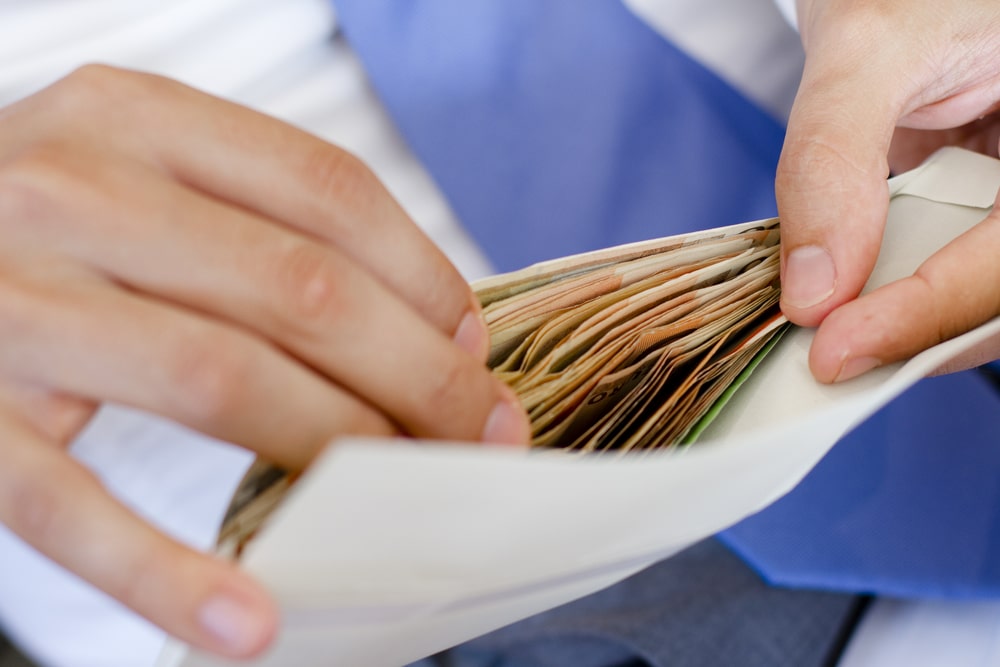If the phrase “cash stuffing” has been popping up on your feed, you’re not alone. This viral budget hack is taking social media by storm, with countless people swearing it’s the key to financial freedom. But what exactly is cash stuffing, and why has it become so popular?
This guide will break down everything you need to know about this trend—from how cash stuffing works, the benefits it offers, and the tools you’ll need, to practical tips and inspiring success stories. By the time you’re done reading, you’ll be ready to take control of your finances one envelope at a time.
What Is Cash Stuffing?
At its core, cash stuffing is a modern twist on the classic envelope budgeting system. The idea is simple but powerful: you divide your income into categories like groceries, bills, savings, and entertainment, and assign each category its own envelope. Then, you physically “stuff” these envelopes with cash for each expense, only spending what’s allocated.
The simplicity of cash stuffing has struck a chord with people looking to break free from overspending, credit card reliance, and financial anxiety. Plus, it’s a hands-on system that gives you a tangible sense of control over your money—something digital transactions often lack.
Step-by-Step Guide to Cash Stuffing
Getting started with cash stuffing is easier than you might think. This budgeting method can help you take control of your finances, spend more mindfully, and even save for your goals. Here’s a step-by-step guide to setting up your system:
1. Assess Your Income and Expenses
Start by calculating your total income—be sure to account for all sources, such as salary, freelance work, or side hustles. Then, identify your monthly expenses. Divide these expenses into categories, such as rent, utilities, groceries, savings, entertainment, dining out, transportation, and debt repayment. Don’t forget to include irregular expenses like gifts or annual subscriptions to get a full picture of your spending habits. Understanding where your money goes is the foundation for successful cash stuffing.
2. Create a Budget
Determine how much money to allocate to each category based on your income and spending patterns. For example, if you usually spend $400 on groceries each month, that’s how much cash you’ll “stuff” into your groceries envelope. Be realistic—allocate money for essentials first, like rent and utilities, then factor in things like savings and discretionary spending. If you’re working towards a financial goal, such as paying off debt or building an emergency fund, consider dedicating a specific envelope to that purpose.
3. Withdraw Cash
Decide how often you’ll refill your envelopes—weekly, biweekly, or monthly—and then head to the bank to withdraw the necessary amount of cash for that budgeting period. Breaking your money into smaller denominations can be helpful, especially for categories with variable spending like dining out or entertainment. This way, you can track your spending more precisely and avoid overspending.

4. Label Your Envelopes
Create labeled envelopes for each category in your budget. You can use plain envelopes, pre-made cash stuffing envelopes, or even invest in reusable ones for added durability and style—many come with organized binders to make budgeting even easier. If it motivates you, personalize your envelopes by adding colors, stickers, or designs to make them visually appealing.
5. Stuff the Envelopes
Place the allocated cash into each envelope according to your budget. These envelopes will act as your spending limits for their respective categories until your next budgeting period. For example, if you’ve allocated $100 for dining out, you’ll only spend from that envelope and stop once it’s empty. This physical limitation helps prevent overspending and keeps you accountable to your budget.
6. Track & Adjust
Use your envelopes throughout the month, and keep track of how you’re doing. Some people like to keep a small notebook or use a budgeting app alongside their cash stuffing system to monitor their spending. If you find yourself short in one category, review your spending and adjust your budget moving forward—maybe you need to allocate more to groceries and less to entertainment. The key is to stay flexible and refine your system to fit your lifestyle and goals.
Cash stuffing is a simple yet powerful way to take control of your finances. By following these steps, you’ll not only gain a clearer understanding of where your money goes but also build better spending habits and work toward your financial goals with confidence.
Why Cash Stuffing Works
Cash stuffing isn’t just a budgeting gimmick; it’s a practical and powerful way to take control of your finances. By relying on physical cash and envelopes, this method encourages discipline and accountability with your money. Here’s why it works so well for so many people:
- Helps You Take Financial Control
When you physically see and handle your money, it becomes easier to set and stick to boundaries around your spending. You know exactly how much you have for each category, eliminating the temptation of mindless swiping or impulsive online shopping. Instead of wondering where your money went, you gain a clear sense of control over every dollar.
- Improves Spending Awareness
Cash stuffing forces you to track and allocate your money with intention, which shines a light on your spending habits. You’ll start to notice patterns in areas where you may be overspending and can make adjustments accordingly. This awareness makes your financial goals feel more achievable because you know exactly where your money is going.
- Reduces the Risk of Debt
By limiting yourself to the cash you’ve allocated in your envelopes, you’re far less likely to fall back on credit cards or loans to cover expenses. This method naturally keeps your spending in check and helps you avoid accumulating unnecessary debt, creating a more sustainable financial future.
- Encourages Savings
With cash stuffing, you can dedicate specific envelopes to savings goals, whether it’s building an emergency fund, planning a vacation, or preparing for a large purchase. Seeing that envelope grow over time provides a sense of accomplishment and motivates you to keep putting money aside for your future.

- Creates a Tangible Connection with Your Money
Handling cash creates a stronger emotional connection to your finances. You’ll think twice before spending because you can physically see the money leaving your envelope. This tangible connection helps reinforce the value of your hard-earned cash and encourages more thoughtful spending decisions.
- Simplifies Budgeting for Beginners
For those new to budgeting, cash stuffing is straightforward and easy to implement. You don’t need complicated spreadsheets or apps—just envelopes and a plan for how to divide your income. This simplicity makes it accessible for anyone looking to take the first step toward better money management.
Ultimately, cash stuffing isn’t just about budgeting; it’s about creating healthier financial habits and gaining the confidence to manage your money effectively. Whether you’re trying to pay off debt, save for a goal, or simply gain control over your finances, this method can help you get there.
Tools and Supplies You’ll Need
While cash stuffing doesn’t require much to get started, these tools can make your experience more enjoyable and effective:
- Budgeting Planner or Notebook
- Envelopes (paper or reusable options)
- Cash Tray (to organize withdrawals)
- Highlighters or Sticky Notes (to track adjustments)
- Expense Tracker App (optional, for digital backups)
6 Tips for Successful Cash Stuffing
To maximize the benefits of cash stuffing, here are some tips to keep in mind:
- Start Small
If managing every expense feels overwhelming, start with one or two categories, such as groceries and entertainment.
- Set Realistic Budgets
Be honest with yourself when allocating funds to each category. Cutting too much from certain areas can lead to frustration.
- Stay Flexible
Life happens—unexpected expenses or changes may force you to shuffle funds between envelopes. That’s okay! Use it as an opportunity to adapt.
- Track Changes
Make notes of any adjustments to your envelopes so you can refine your budgeting process over time.
- Celebrate Wins
Hit a debt milestone or save for that vacation? Celebrate those wins to stay motivated.
- Engage Family or Partners
If you share finances, involve others in your cash stuffing system to ensure everyone is aligned and accountable.

Real-Life Success Stories
There’s no shortage of inspiring testimonials from people who’ve transformed their lives with cash stuffing. Here are just a few highlights:
- Amanda’s Debt-Free Journey
Amanda, a 28-year-old teacher, used cash stuffing to pay off $20,000 in student loans in under two years. “Cutting up my credit cards felt scary, but it was so empowering,” she shared.
- Marcus’s Emergency Fund
Marcus, a freelance photographer, never thought he could build savings. Thanks to cash stuffing, he saved six months’ worth of expenses for emergencies within 18 months.
- Jessica’s Stress-Free Budgeting
Single mom Jessica was tired of feeling overwhelmed by her finances. “Cash stuffing simplified everything for me—it gave me clarity and control I never had before.”
Take Control of Your Finances
Cash stuffing offers a simple but incredibly effective approach to budgeting—and its growing popularity proves it works. By dividing your expenses into envelopes and using only the cash inside, you can take control of your spending, break free from debt, and achieve your financial goals.
Why not give it a try? Start small, stay consistent, and watch how it transforms your relationship with money.
